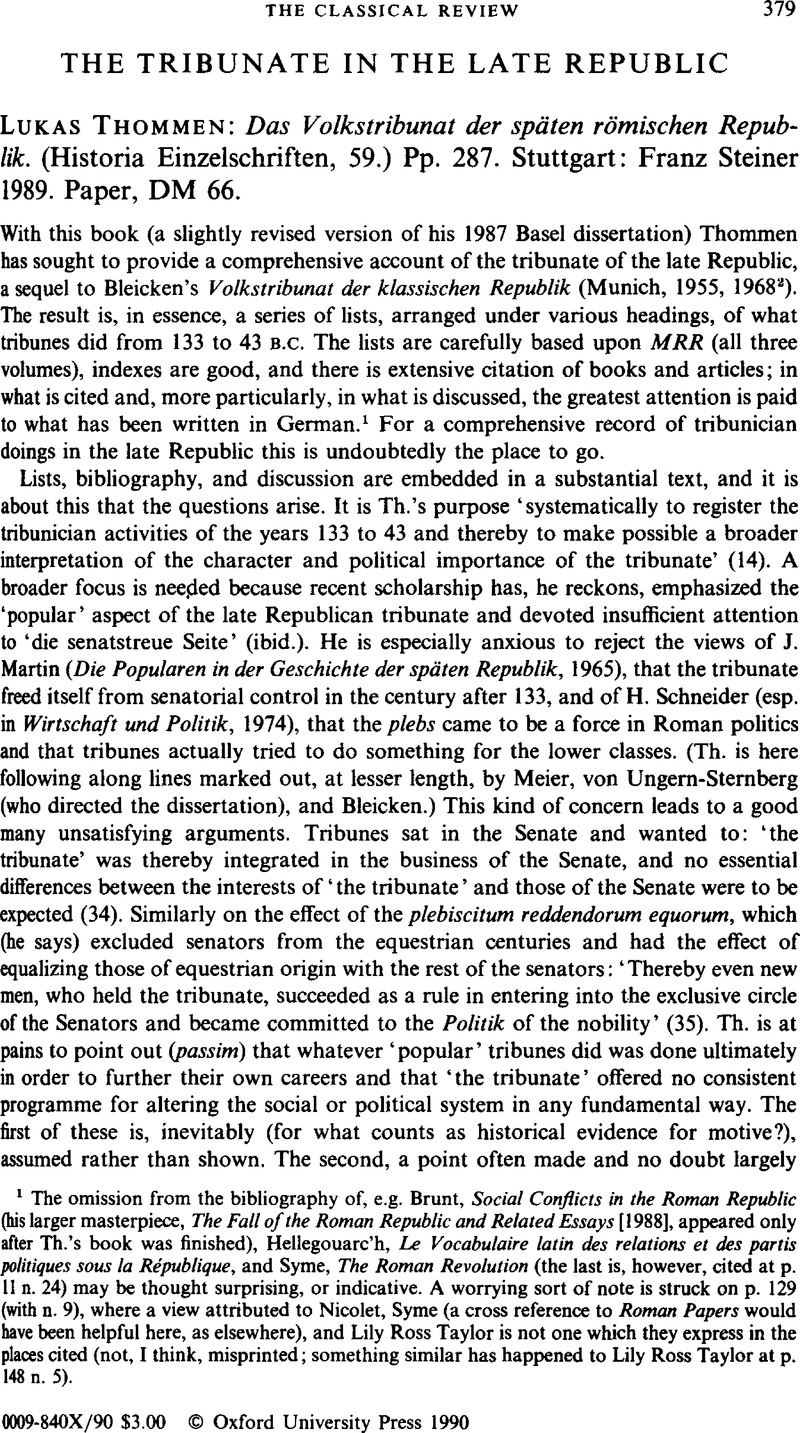No CrossRef data available.
Article contents
The Tribunate in the Late Republic - Lukas Thommen: Das Volkstribunat der späten römischen Republik. (Historia Einzelschriften, 59.) Pp. 287. Stuttgart: Franz Steiner1989. Paper, DM 66.
Published online by Cambridge University Press: 16 February 2009
Abstract

- Type
- Reviews
- Information
- Copyright
- Copyright © The Classical Association 1990
References
1 The omission from the bibliography of, e.g. Brunt, Social Conflicts in the Roman Republic (his larger masterpiece, The Fall of the Roman Republic and Related Essays [1988], appeared only after Th.'s book was finished), Hellegouarc'h, Le Vocabulaire latin des relations et des partis politiques sous la République, and Syme, The Roman Revolution (the last is, however, cited at p. 11 n. 24) may be thought surprising, or indicative. A worrying sort of note is struck on p. 129 (with n. 9), where a view attributed to Nicolet, Syme (a cross reference to Roman Papers would have been helpful here, as elsewhere), and Lily Ross Taylor is not one which they express in the places cited (not, I think, misprinted; something similar has happened to Lily Ross Taylor at p. 148 n. 5).
2 Th.'s views on this do seem, however, to be indicated clearly enough by his cavalier dismissal of recent work on the nature of Roman politics by, i.a., F. Millar in JRS 1984 and 1986 (12; note that the tribunician activities considered on pp. 36–8, emphatic as they are of the P in SPQR, fit more comfortably into an analysis like Millar's). Some, at least, of Brunt's strictures on Meier's Res Publica Amissa (JRS 1968, pp. 229–32, esp. 229) are every bit as applicable here.




